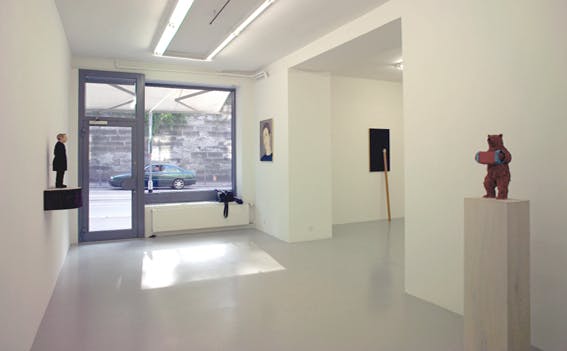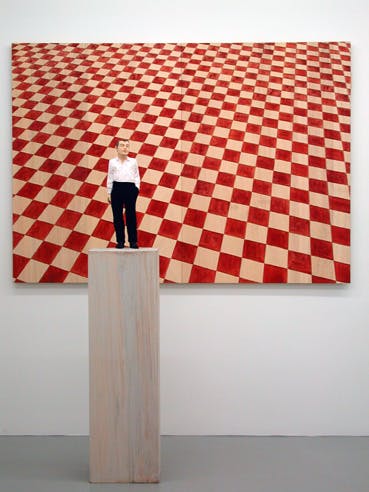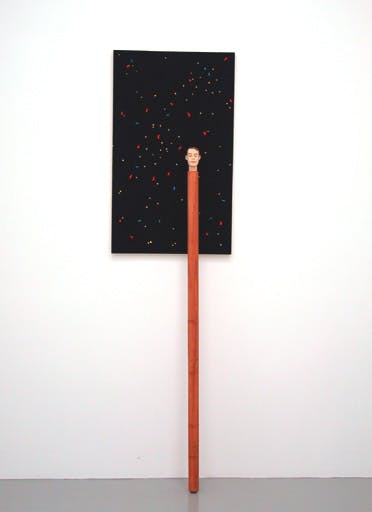We are pleased to be able to present a new group of works by the sculptor Stephan Balkenhol (b. 1957 in Fritzlar, Hessen). In the 1980s Balkenhol re-invented figuration between Conceptual and Minimal Art, Neo-Expressionism and Context Art. His works show that the possibilities for figuration in sculpture are by no means exhausted. The gallery has represented the artist since 1989. Stephan Balkenhol lives and works in Meisenthal (France) and Karlsruhe (Germany).
“The secret is to make something from a piece of wood that is alive (a kind of creative act) and in which there is enough energy to move something in us.”
Stephan Balkenhol in an interview with Kay Heymer.
Stephan Balkenhol’s sculptures, his portrayals of people and animals, flowers and mythical creatures have a great presence and sense of life without, however, ever letting the observer forget that they are sculptures. The rough and partially splintered surface of the painted sculptures bares the traces of the artist’s working the wood. The volume of the original tree trunk, from which the figures are hewn, thus continues to remain evident. Through this the immediacy of the creative process that moves between the two poles of tension of the artistic idea and the material, the form and the unformed becomes clear to the observer. Balkenhol has himself declared the great speed with which he hews the figures from the wood and the resistance of the material in this process as important preconditions for his work. In this way the artist’s experiences, his examination of the history of sculpture, of reality, of archtetypal images and the state of human existence flow into the process of creating new form. However in contrast to the speed of the working process are the calm and statuesqueness of Balkenhol’s finished figures. In spite of their everydayness as well as the immediacy and openness of their expression, they withdraw from the observer and keep a curious distance. In this way Stephan Balkenhol’s sculptures show themselves to be a reflection of that border on which the formed and defined strike the undefined. However, since the comprehension of the defined and limited is always itself a form of understanding, they go beyond this to fundamentally take this border as a theme.











